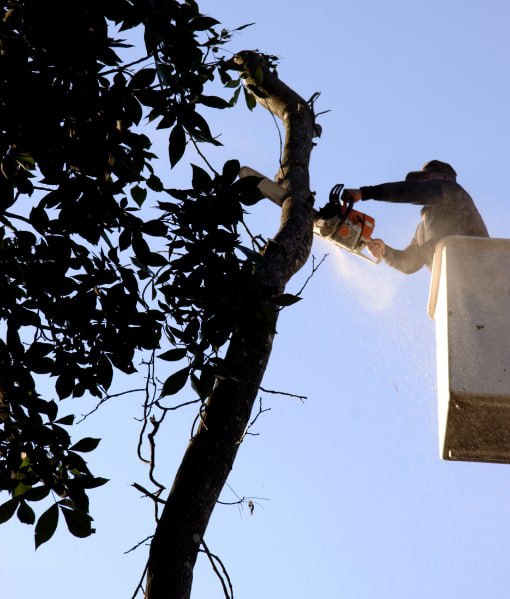
Introduction: Trees add beauty, shade, and value to our landscapes, but when they grow too close to power lines, they can pose significant safety risks and service interruptions. Pruning trees near power lines is a crucial task that requires careful planning, adherence to regulations, and a commitment to safety. In this blog post, we will explore the importance of tree pruning near power lines, safety considerations, and the regulations that govern this critical task.
Why Prune Trees Near Power Lines?
- Safety: Overgrown trees near power lines pose a serious safety hazard. During storms or strong winds, branches can fall onto power lines, potentially causing fires, outages, or electrical hazards.
- Service Reliability: Pruning helps ensure the reliability of electrical service by reducing the chances of power outages and costly repairs.
- Vegetation Management: Regular tree pruning helps utility companies manage vegetation, ensuring power lines’ safety and functionality while reducing maintenance costs.
Safety Considerations:
- Hire Professionals: Tree pruning near power lines should always be conducted by trained and certified tree surgeons or arborists. They have the knowledge and equipment needed to perform this task safely.
- Safety Gear: Professionals wear appropriate personal protective equipment (PPE), such as helmets, eye protection, and insulated gloves, to safeguard against potential electrical hazards.
- Insulation: Specialised equipment and tools with insulated handles are used to minimise the risk of electrical contact while pruning.
- De-energisation: In some cases, utility companies may temporarily de-energise power lines to ensure the safety of workers. This is done in consultation with the utility company and local authorities.
Regulations and Permits:
- Local Regulations: Check with your city or municipality for specific regulations governing tree pruning near power lines. Many areas have strict guidelines in place.
- Utility Company Guidelines: Utility companies often have their guidelines for vegetation management near power lines. These guidelines may vary depending on the voltage and type of power lines.
- Permits: Depending on your location and the nature of the work, you may need to obtain permits before pruning trees near power lines. Failure to do so can result in fines or penalties.
The Pruning Process:
- Assessment: The first step is to assess the trees and the proximity of power lines thoroughly. This helps determine the pruning approach.
- Selective Pruning: The goal is to create a safe clearance between the tree branches and the power lines without compromising the tree’s health.
- Directional Pruning: Proper pruning techniques, such as directional pruning, help guide the tree’s growth away from power lines over time.
- Regular Maintenance: Trees should be periodically inspected and pruned as needed to maintain safe clearances.
Conclusion: Pruning trees near power lines is a critical task that trained professionals who understand the safety measures and regulations involved should only be carried out. Proper tree pruning safeguards against electrical hazards and service interruptions and contributes to a safer and more reliable electrical infrastructure. Always consult with local authorities and utility companies before embarking on any tree pruning near power lines to ensure compliance with regulations and safety standards.
Call us on: 01580 234692
Click here to find out more about Tenterden Tree Surgeons
Click here to complete our contact form and see how we can help with your tree’s needs.